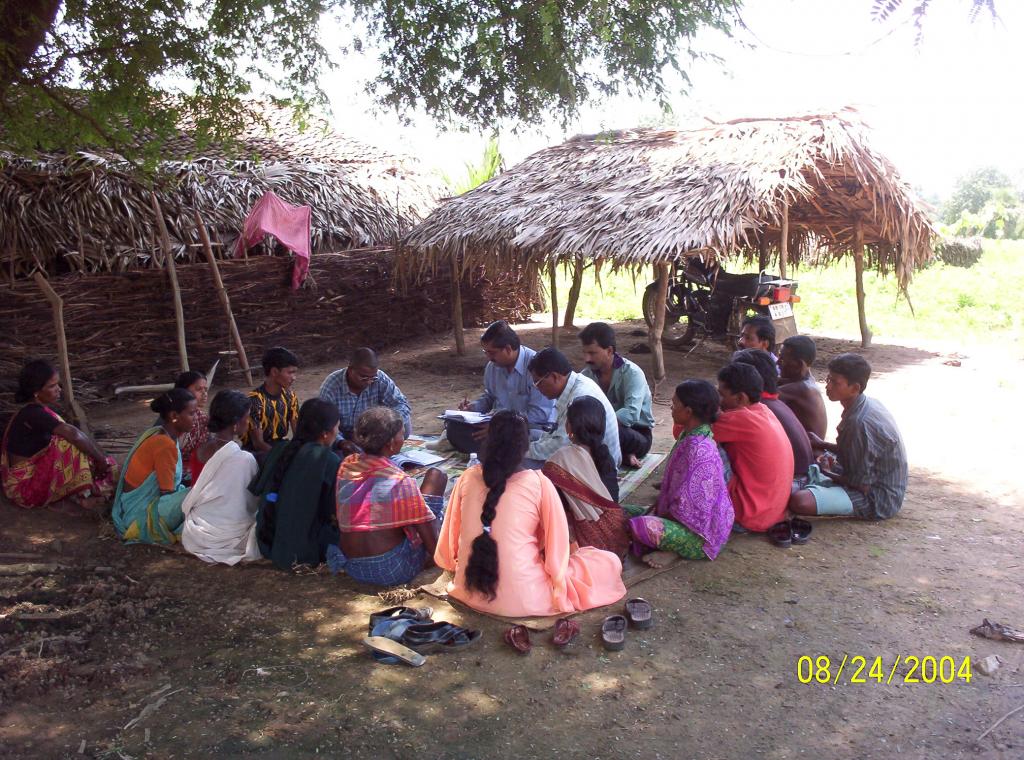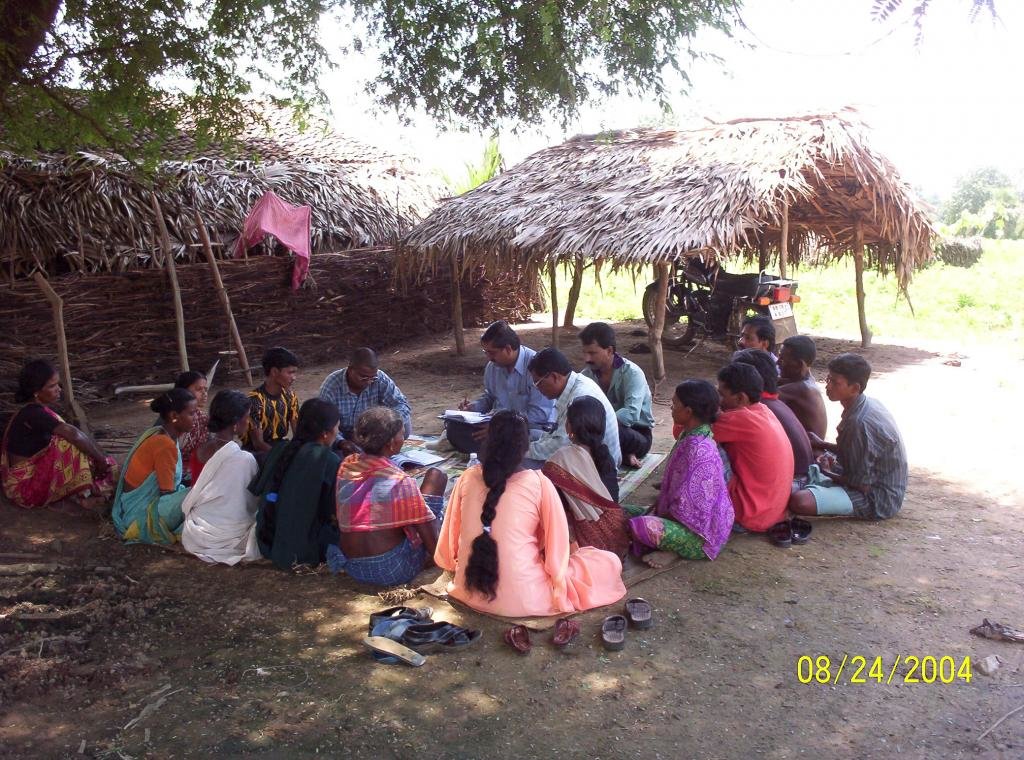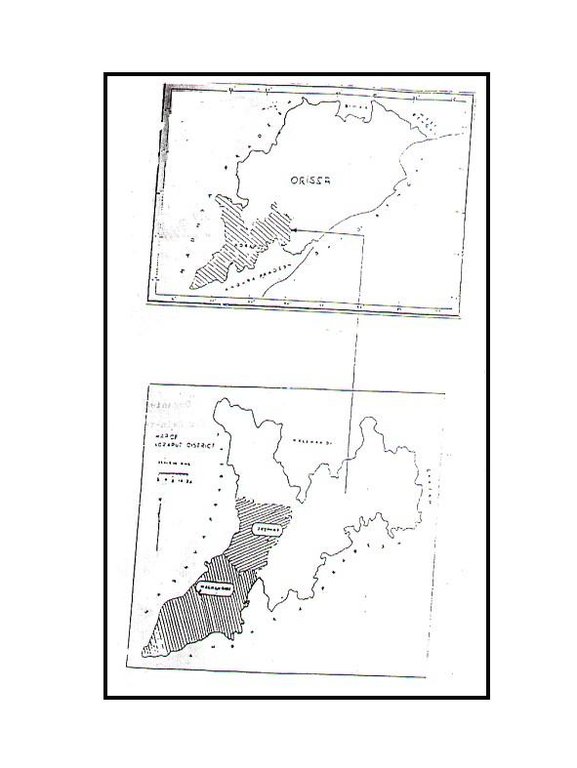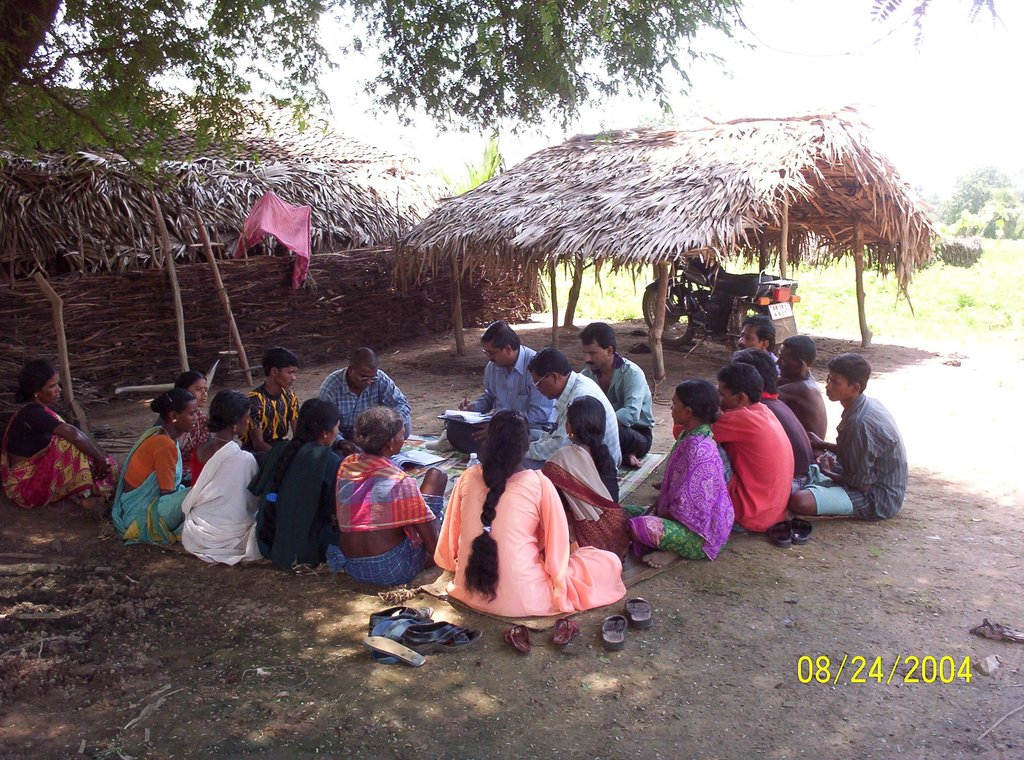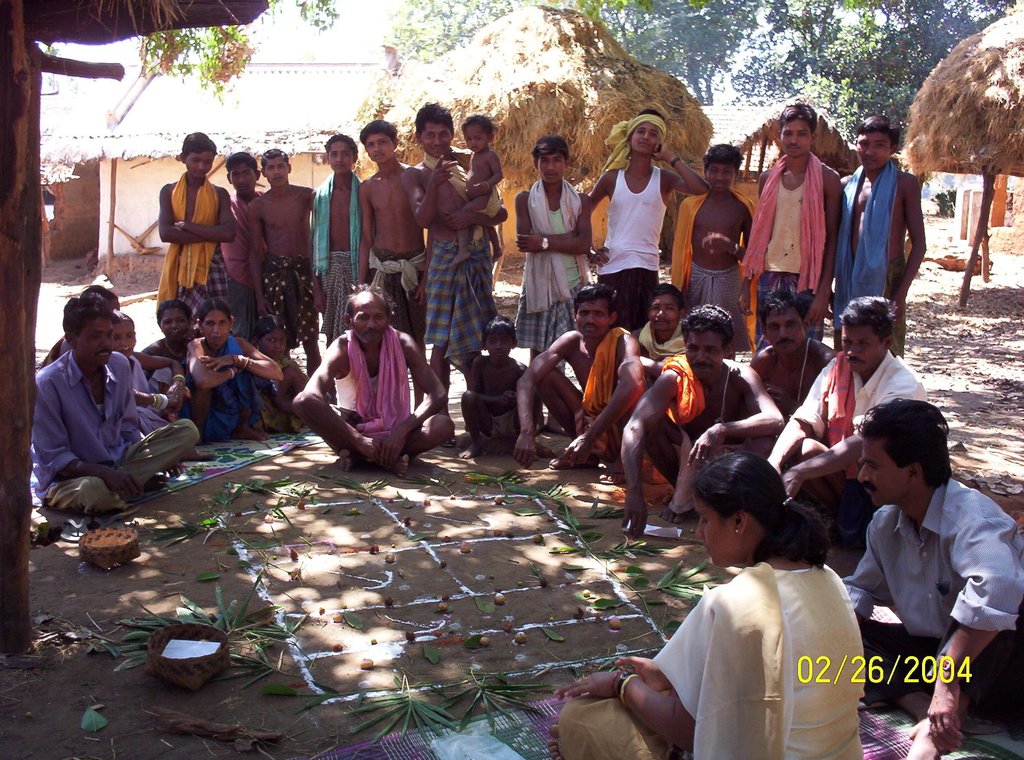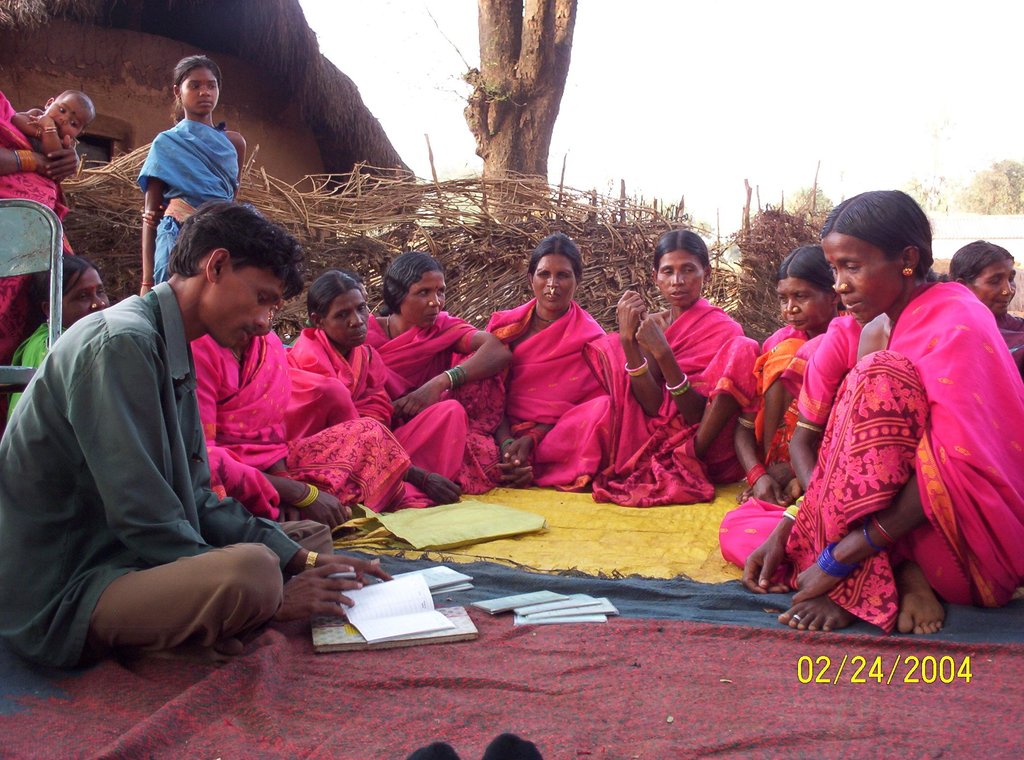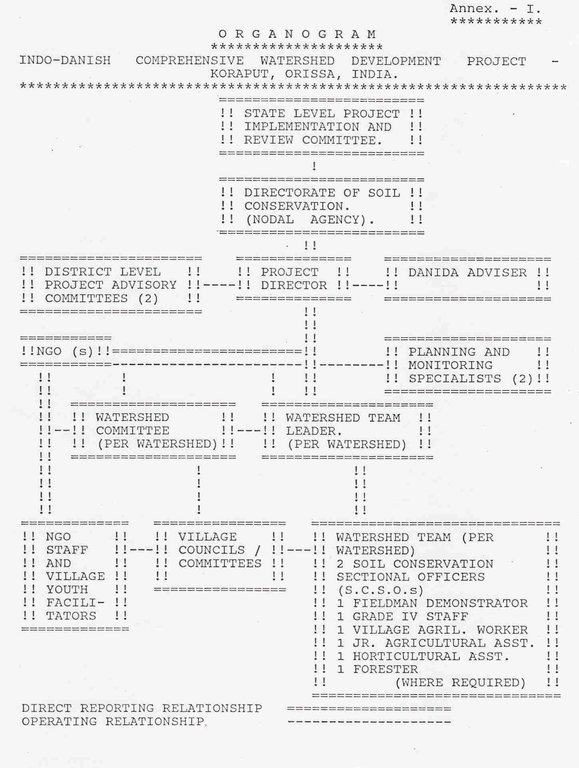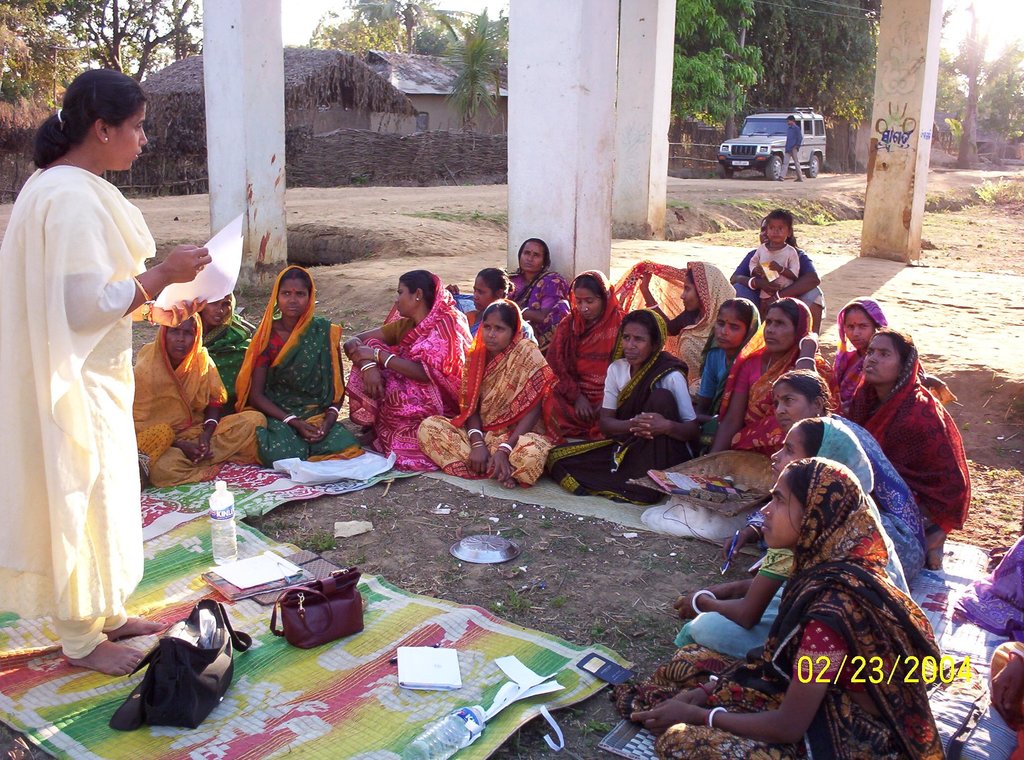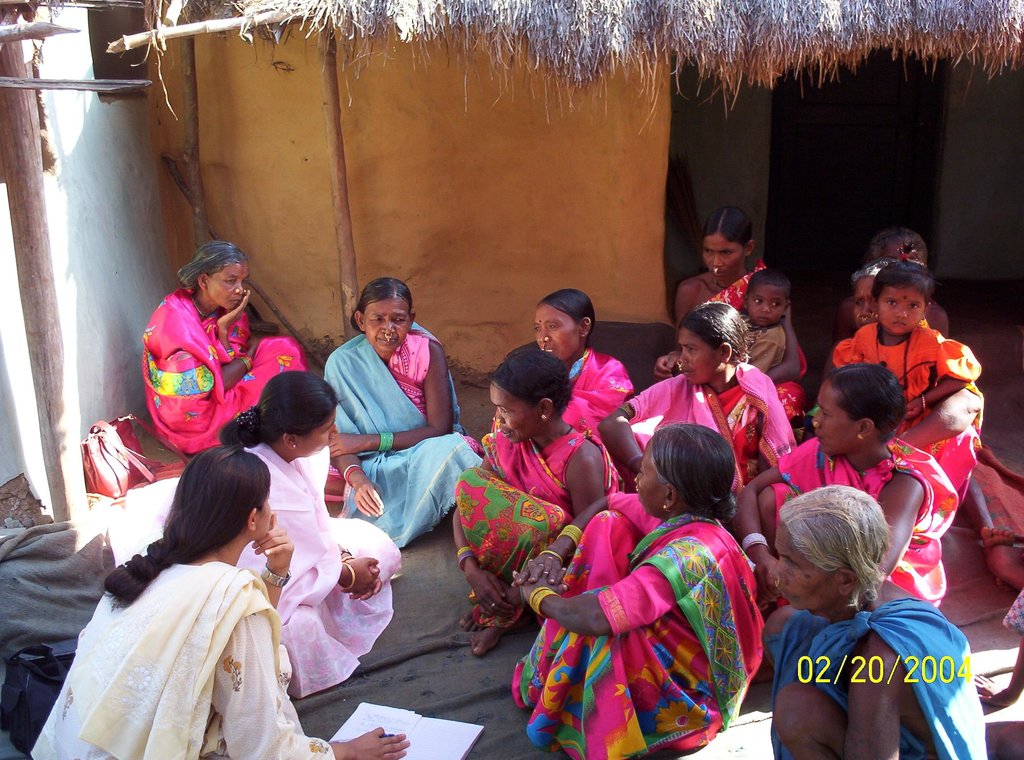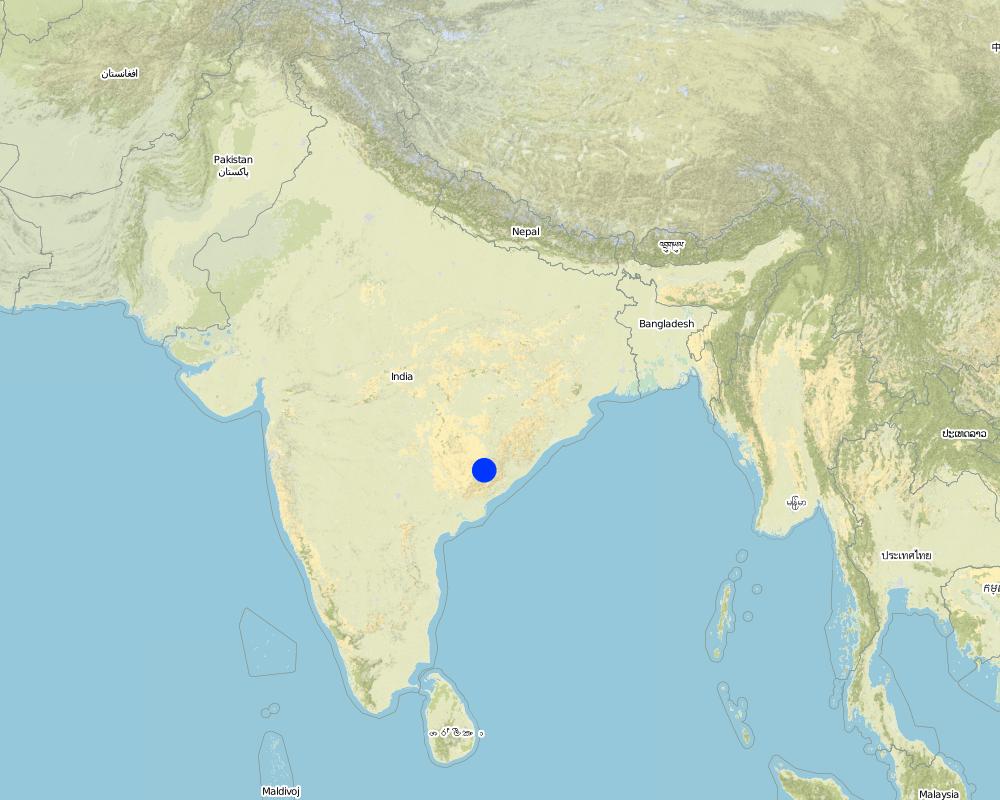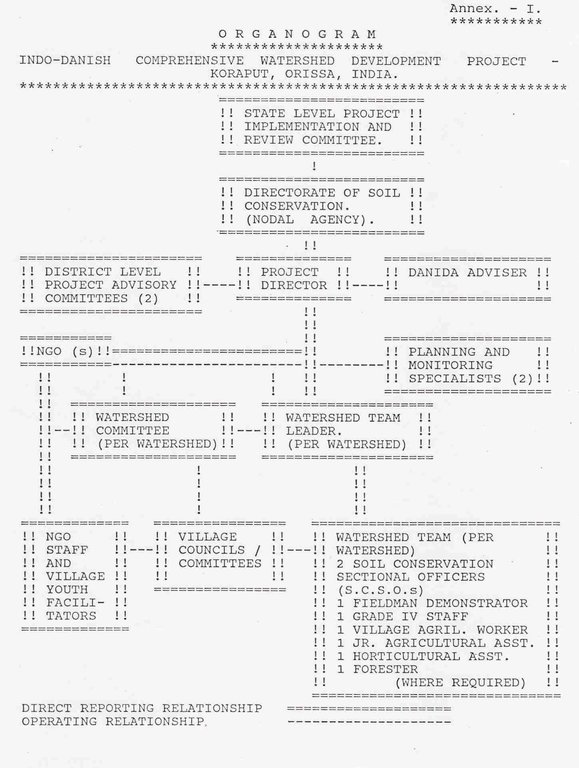PARTICIPATORY APPROACH IN IDCWDP, DANIDA [Индия]
- Создание:
- Обновить:
- Составитель: Srikanta Kumar Parida
- Редактор: –
- Рецензент: Fabian Ottiger
approaches_2372 - Индия
Просмотреть разделы
Развернуть все Свернуть все1. Общая информация
1.2 Контактные данные специалистов и организаций, участвующих в описании и оценке Подхода
Специалист по УЗП:
BIJAYALAXMI Mishra
Индия
Название организации (-ий), содействовавших документированию/оценке Подхода (если применимо)
Orissa Government - Индия1.3 Условия, регламентирующие использование собранных ВОКАТ данных
Составитель и ответственный/-ые специалист(-ы) согласны с условиями, регламентирующими использование собранных ВОКАТ данных:
Да
1.4 Ссылка (-и) на Анкету (-ы) по Технологиям УЗП
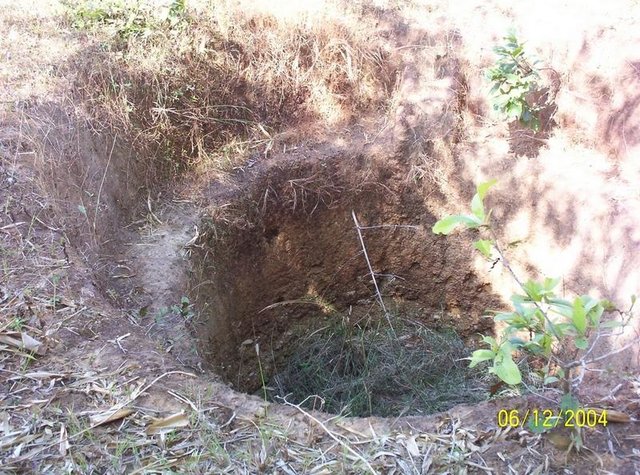
Integrated Farming System [Индия]
Growing of crops for food, fodder trees and fibre forest in a compact patch.
- Составитель: Srikanta Kumar Parida
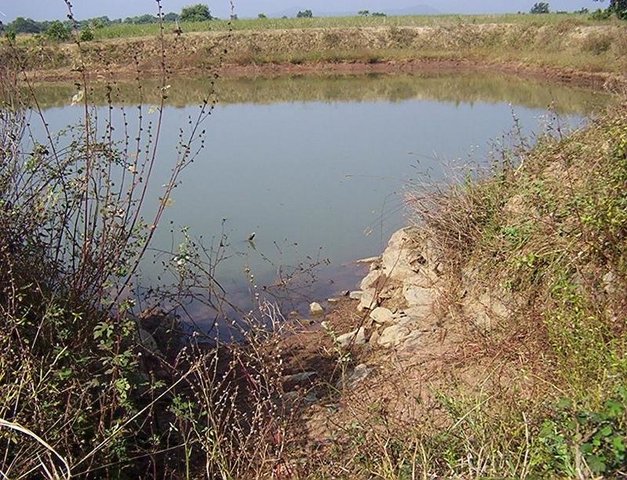
Dugout Sunken Pond with Catchment Treatment [Индия]
Dugout sunken pond with catchment treatment.
- Составитель: Unknown User
2. Описание Подхода УЗП
2.1 Краткое описание Подхода
Participatory approach for holistic and intigrated development of the defined area on watershed basis involving all level of stake holders.
2.2 Подробное описание Подхода
Подробное описание Подхода:
Aims / objectives: Long term - Establish suitable and locally acceptable land use system which are sustainable and ecologically sound.The land use system should enable the poor rural community to improve their living condition and tsupply of food, fuel and fodder and other essentials, without exposing the natural resources to harmful stress. Intermediate Objective- Preserve the resource base by introducing improvemnets which are feasible, effective and attractive to the target groups in the area by combining elements of soil conservation, crop production, horticulture, animal husbandary and tree planting in such a way that sustaibale use is made of every niche of land within the watershed.
Methods: (1) Mobilization of community by NGO/ GO people through meetings. (2) Demonstration at the field level. (3) Organizing farmers field day. (4) Exposure visit to the watershed area. (5) Training. (6) Land development activities,
Stages of implementation: (1) Socio economic survey. (2) Participatory Rural Apprisal (PRA). (3) Preparation of participatory annual action plan with the community and village and watershed committee. (4) Consolidation of annual action plan by project management unit and circulation for comments to WDCU, DSC(O). (5) Approval of annual action plan by the state level project empowered committee and sanction of funds. (6) Implementation through community and mobilisation for labour contribution by the community (if such component are there). (7) Training at the field level. (8) Organizing monitoring by the community/ Specialist.
Role of stakeholders: NGO (Field Organizers)- Organizing village meeting and mobilization of community towards different activities and labour contribution organising PRA, meeting, group discussion, survey, formation of committee, preparation of AAP. Villagers:- Attendance of meeting, selection of beneficiaries from the target group and sites for different activities. Monitoring and implementation (Physical) of the activity. Youth facilitator:- The village youth facilitators played a key role through out the process of planning, implementation and monitoring and to solve the problems in case arises at any stage of the work. The village yourth facilitator acted as the link person between the community and the project. SWC (From Project management Unit) - Supervision, training to the SWC specialist, communicate new technology to the community. Beneficiaries:- Implementation, contribution of labour selection of his own land for SWC technology, monitoring, receive training, training before/during/afteer care.
Other important information: Government and NGO collaborately played a vital role to bring all level of stak holders to a common forum of participation.
2.3 Фотографии, иллюстрирующие Подход
2.5 Страна/ регион/ место, где применялся Подход
Страна:
Индия
Административная единица (Район/Область):
Orissa
Map
×2.6 Даты начала и окончания реализации Подхода
Год окончания (Если Подход больше не применяется):
2003
2.7 Тип Подхода
- в рамках проекта/ программы
2.8 Каковы цели/ задачи Подхода
The Approach focused mainly on SLM with other activities (Live stock development, SHG formation, management group, development of local committee, income generating, identification of 10 poorest and support for upliftment, training, women empowerment)
Long term - Establish suitable and locally acceptable land use system which are sustainable and ecologically sound. The land use system should enable the poor rural community to improve their living condition and tsupply of food, fuel and fodder and other essentials, without exposing the natural resources to harmful stress. Intermediate Objective- Preserve the resource base by introducing improvemnets which are feasible, effective and attractive to the target groups in the area by combining elements of soil conservation, crop production, horticulture, animal husbandary and tree planting in such a way that sustaibale use is made of every niche of land within the watershed. -Ease the pressure on non arable lands by increasing the productivity of land which is suitable for more intensive use which is suitable for more intesive use without risk of loss in soil fertility. -Provide marginal farmers and landless people with assests which yield essentials or generate income possibilities. Immediate: Relevant authorities will identify, plan for implement and monitor proper conservation measures and land use system acceptable and in cooperation with the people in the project area of Koraput and Malkangiri districts. Thereby increase production of agricultural and other rural products and improve gainful, empowerment opportunity for men and women among landless , small and marginal farmers.
The SLM Approach addressed the following problems: (1) Both the project districts like Koraput & Malkangiri are among the most poor, backward with 90% of the house hold are below the official poverty line. Literacy rate is just above 10%. (2) The dry land farming is predeminant activity. (3) The soil in the districts suffer from severe land degradation and erosion problems needing protectin and preservation measures.
2.9 Условия содействующие применению Технологии/ Технологий в рамках Подхода или затрудняющие его
Социальные/ культурные/ религиозные нормы и ценности
- затрудняют
(1) No faith on Govt. people. (2) Practice on not participapting in any Govt. programme. (3) No women participation in any common gathering. (4) Dominance of influencial persons in the villages. (5) No participation of poors in any developmental work.
Treatment through the SLM Approach: (1) Repeated meeting by Govt. and NGO staff (2) Greter importance to the poorer section through out the process. (3) Identification of 10 poorest family in each village (4) Engagement of Lady organizer to oroganize the women of the respective area. (5) Fo
Наличие/ доступность финансовых ресурсов и услуг
- затрудняют
Irregular flow of fund by the sanction authority which hampered the season based activities.(2)Achieve the targetted amount of contribution for different activities from the community.
Treatment through the SLM Approach: The irregular funds flow continued till end of the programme.But regarding contribution component it was reduced from the 50% to20% in amount at the policy level which could be achieved by community mobilisation through NGO who were associated as the proj
Нормативно-правовая база (землевладение, права на земле- и водопользование)
- затрудняют
The existing land ownership, land use rights / water rights hindered a little the approach implementation Due to ignorance of the people, initially it was difficult to take up any activity in farmers land since the apprehensive of loss of llllland by the Govt. Staff was existing in the mind of land users.
3. Участие и распределение ролей заинтересованных сторон
3.1 Заинтересованные стороны, участвующие в реализации Подхода и их роли
- местные землепользователи/ местные сообщества
Land less and Small/marginal farmers
Work equally divided between men and women (Both men and women work on common land activities, the land users worked combinely and in most of the private activities work done individualy. Though the male and female do all type of work, but due to their usual practice the women participation was very less in the initial period of the project. But due to the presence of the NGO in the project, they could be brought in the main stream of the project and by which many successful women self help group than the male group could be organized. The project has earmarked poor as main target froup. Through NGO they have been encouraged and mobilized to partcipate in project activities. As per the project guide line no land less and the small/ marginal farmers have their representation in the village committee/watershed committee wheremajor decission taken place. During implementation they priority for engegement of labour and income.
- общественные организации
NGO as project partner
- государственные власти (отвечающие за планирование или принятие решений)
Ministry of Agriculture, India.
(1) Watershed development coordination unit (2) State Agriculture Department (3) Director of Soil Conservation
3.2 Участие местных землепользователей/ местных сообществ на разных стадиях реализации Подхода
| Участие местных землепользователей/ местных сообществ | Перечислите участников и опишите их вовлеченность | |
|---|---|---|
| инициирование/ мотивация | внешняя поддержка | public meetings; General village level meeting organized village committee members selected. Youth facilitator selected. Due to presence of NGO all villagers were mobilized to join in the mainstream of the project. |
| планирование | интерактивное | All community were associated in planning meeting and PRA . Addl land survey made in association with land users. Need assessment made for each house hold in association with the villagers. Approval of action plan in watershed and village committee. |
| выполнение | внешняя поддержка | |
| мониторинг/ оценка | интерактивное | At different level of meeting the land users views collected. The watershed committee (consisting of members from all villages) was the main body for monitoring and evaluation of the activities. |
| Research | интерактивное | on-station; Only for limited activities some soil testing made in the soil research station of the district. |
3.3 Схема реализации (если имеется)
3.4 Принятие решений по выбору Технологии/ Технологий УЗП
Укажите, кто принимал решение по выбору применяемой Технологии/ Технологий:
- в основном землепользователи при поддержке специалистов по УЗП
Поясните:
Many technologies has been takn up from the guide line of NWDPRA. But some are also innovative one emerged from the project level. However whenever any technology decided to be implemented, the land users view aloways respected for sustainable of the activity and transferred appropriate technology.
Decisions on the method of implementing the SLM Technology were made by mainly by land users supported by SLM specialists. Relating to the method of implementation fo the activity, the suggestion of the land users played a vital role.
4. Техническая поддержка, повышение компетенций и управление знаниями
4.1 Повышение компетенций/ обучение
Проводилось ли обучение землепользователей/ других заинтересованных лиц?
Да
Укажите, кто проходил обучение:
- землепользователи
- SWC specialists, extensionists/trainers, Local Invitor
Тип обучения:
- в ходе работы
- обмен опытом между фермерами
- опытные участки
- общие собрания
- курсы
Тип обучения:
- Courses and class room training
Рассматриваемые темы:
Method of implementation, merits, demerits of the technology, maintenance, socio-economic dimension, exposure visit, management committee formation for sustainability of the technolotgy.
4.2 Консультационные услуги
Есть ли у землепользователей возможность получать консультации?
Да
Укажите, где именно оказываются консультационные услуги:
- в постоянно функционирующих центрах
Описание/ комментарий:
Name of method used for advisory service: Training and exposure visit, demonstration, meeting.; Key elements: Meeting and group discussion., Individual beneficiary interaction., Filed visit and watershed level exihibition.; 1) Advisory service was carried out through: projects own extension structure and agents; Extension staff: mainly government employees 3) Target groups for extension: land users; Activities: Demonstration, exposure visit, training, meeting, group discussion
Advisory service is inadequate to ensure the continuation of land conservation activities; In knowledge it is adequate, but the approach is plicy based. So the continuation can not be guaranted fully.
4.3 Институциональная (организационная) поддержка
В ходе реализации Подхода были ли организованы новые институциональные структуры или поддержаны уже существующие?
- да, умеренно
Укажите уровень, на котором структуры были укреплены или вновь созданы:
- местные
Укажите тип поддержки:
- повышение компетенций/ обучение
4.4 Мониторинг и оценка
Являются ли мониторинг и оценка частью Подхода?
Да
Комментарии:
bio-physical aspects were regular monitored through observationse
technical aspects were regular monitored through measurements
socio-cultural aspects were regular monitored through observations
economic / production aspects were ad hoc monitored through observations
area treated aspects were regular monitored through measurements
no. of land users involved aspects were regular monitored through measurements
management of Approach aspects were regular monitored through measurements
There were several changes in the Approach as a result of monitoring and evaluation: (1) Many new activities introduced. (2) More funds diverted to the poverty oriented activities (3) Like income generating activities changes in last norm of NGO operational expenditure to give more priority on community participation. (4) 10 poorest identified were appreciated and suggested for concetration of their socio economic upliftment.
4.5 Научные исследования
Были ли научные исследования частью Подхода?
Да
5. Финансирование и внешняя материальная поддержка
5.1 Годовой бюджет мероприятий по УЗП в рамках Подхода
Если точный годовой бюжет неизвестен, укажите примерный диапазон затрат:
- < 2000
Комментарий (например, основные источники финансирования/ ключевые доноры):
Approach costs were met by the following donors: government (national - Salary and other expences of staff): 18.0%; international (DANIDA 13.25): 75.0%; local community / land user(s) (-): 7.0%
5.2 Финансирование и внешняя материальная поддержка, предоставляемая землепользователям
Предоставлялась ли землепользователям финансовая/ материальная поддержка для применения Технологии /Технологий?
Да
5.3 Субсидии на отдельные затраты (включая оплату труда)
- оборудование
| Укажите, какие ресурсы были субсидированы | В какой степени | Опишите субсидии подробнее |
|---|---|---|
| техника | профинансированы полностью | |
| инвентарь/ инструменты | профинансированы полностью | |
- сельскохозяйственные
| Укажите, какие ресурсы были субсидированы | В какой степени | Опишите субсидии подробнее |
|---|---|---|
| семена | профинансированы полностью | |
| удобрения | профинансированы полностью | |
| Seedlings and biocides | ||
- инфраструктура
| Укажите, какие ресурсы были субсидированы | В какой степени | Опишите субсидии подробнее |
|---|---|---|
| Community infrastructure | профинансированы полностью | |
Если труд землепользователя был существенным вкладом, укажите, был ли этот вклад:
- за денежное вознаграждение
Комментарии:
Govt. wages for their labour work.
5.4 Кредитование
Предоставлялись ли в рамках Подхода кредиты на мероприятия УЗП?
Нет
6. Анализ влияния и заключительные положения
6.1 Влияние Подхода
Сумел ли Подход помочь землепользователям внедрить и поддерживать технологии УЗП?
- Нет
- Да, немного
- Да, умеренно
- Да, существенно
The importance of low cost oriented appopriate technology of the project attracted to a greater part of the community. The land users have also trainined on implementation of technology like veg.bunding, water hole, V-ditch, excavation of ponds, structure, plantation, cave of natural forest etc.
Сумел ли Подход разрешить правовые проблемы землевладения/ землепользования, препятствующие использованию технологий УЗП?
- Нет
- Да, немного
- Да, умеренно
- Да, существенно
Due to close association of NGO and strong involvement of Govt. staff at the filed level the problem could be solved.
Did other land users / projects adopt the Approach?
- Нет
- Да, немного
- Да, умеренно
- Да, существенно
(1) The Govt. of India adopted GO-NGO collaboration in watershed development programme. (2) The district administration adopted like - (a) Low cost technology. (b) Community Participation. (c) Labour contribution in community (d) SHG (e) Exercise of PRA in watershed planning and monitoring.
6.3 Долгосрочная устойчивость мероприятий в рамках Подхода
Могут ли землепользователи самостоятельно (без внешней поддержки) продолжать применение того, что было реализовано в рамках Подхода?
- да
Если да, опишите как:
The land users can continue the approach due to following reasons. - Low cost. - Skill transferred to the community - Management committee has been frame. - The farmers have realised the benefit in their own land and demonstration plot. - Registered VDA has established in all the villages for management and financial support to poor land users.
6.4 Сильные стороны/ преимущества Подхода
| Сильные стороны/ преимущества/ возможности по мнению землепользователей |
|---|
| Community level institutions like VDA, SHGs has been formed. |
| Technology with the skill of implementation has been transferred . Technology with the skill of implementation has been transferred to the community. |
| Two well trained village ficilitators are existing in all the villages who are well on all aspects of the projecttrained. |
| Сильные стороны/ преимущества/ возможности по мнению составителя или других ключевых специалистов |
|---|
| NGO cooperation (How to sustain/ enhance this strength: The Govt. should take it as a policy.) |
| Registered VDA existed in all the village (How to sustain/ enhance this strength: They should be honour/ recognse and get priority at all official lelvel) |
| SHG (How to sustain/ enhance this strength: All SHG must be tagged with banks and after institutions which has done by the project to a great extent.) |
| Village Facilitator (How to sustain/ enhance this strength: District administration may utilise their services.) |
7. Справочные материалы и ссылки
7.1 Методы сбора/источники информации
- выезды на места, полевые обследования
- опросы землепользователей
7.2 Ссылки на опубликованные материалы
Название, автор, год публикации, ISBN:
Plan of Operation (First, Second)
Где опубликовано? Стоимость?
Director, Soil Conservation, Orissa
Название, автор, год публикации, ISBN:
Guide line for NWDPRA
Где опубликовано? Стоимость?
Agriculture Depaprtment, Govt. of India
Ссылки и модули
Развернуть все Свернуть всеСсылки

Integrated Farming System [Индия]
Growing of crops for food, fodder trees and fibre forest in a compact patch.
- Составитель: Srikanta Kumar Parida

Dugout Sunken Pond with Catchment Treatment [Индия]
Dugout sunken pond with catchment treatment.
- Составитель: Unknown User
Модули
Нет модулей


